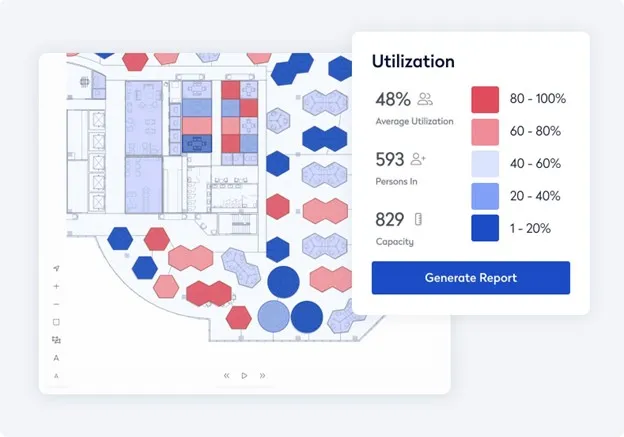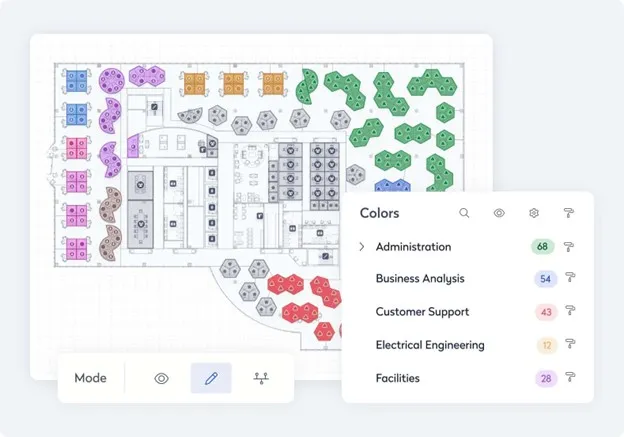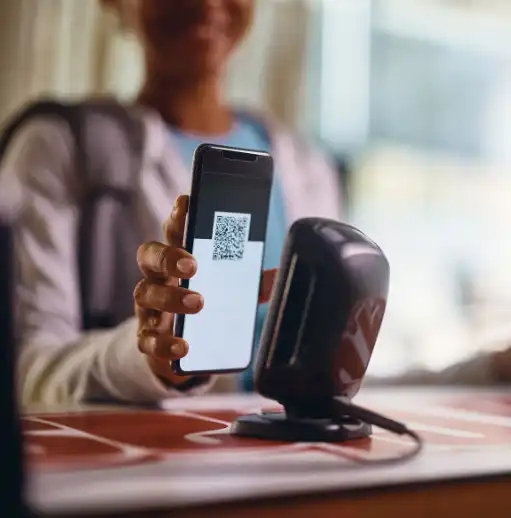
How complete is your workspace picture? How close to real time is your workplace and building data today? What about all the other areas on your office floor or building outside of meeting rooms and desks?
Occupancy sensors are a powerful tool that collect people flow data on all parts of your buildings. Sensors can help obtain more accurate information than manual, time-consuming methods, such as walking the floor to count people or relying on employee surveys to inform workspace decisions. Sensor data is becoming more and more essential to space planning to create better occupied workspaces – and help facility managers and workplace strategists create more precise and accurate plans for office moves and space reconfigurations.
Sensor data is versatile too. You can integrate it with building automation systems to reduce energy usage to help hit sustainability targets. You can also fuse it with integrated workspace management systems (IWMS) to track data from motion sensors, seat sensors, beacons, and more, creating an agile workplace with real-time utilization reporting.
When you connect them to an IWMS, sensors give facilities teams accurate and comprehensive insight into how their space is used, such as which desks, rooms, and other areas of the office employees are using, and for how long. Occupancy sensors are among the most crucial technologies to be adopted by 2025 — along with automation systems and environmental controls, according to JLL research.
In the age of flexible work models where hybrid work is the new standard, employee behavior in workspaces is more dynamic and harder to pinpoint utilization. Plus, today’s organizations are metrics driven and seek methods for speeding up data capture and eliminating as much guesswork as possible.
Understanding occupancy sensors for space planning
Occupancy sensors are a powerful tool for measuring space utilization in office spaces. They are devices that detect and measure the presence of people within a certain area, providing invaluable data about desk occupancy, meeting room usage, and overall space utilization. Occupancy sensors can be mounted on walls or ceilings – and use different technologies to detect presence or detect motion when someone enters or exits a space.
Occupancy sensors can also provide insights into the user experience in buildings. See how employees move around the office, what areas are most popular at different times of day and know the behaviors of staff when present in specific areas.
How are employees actually using the space? Sensors help planners separate the wants and desires of employees from the workspace needs of an organization as a whole.
“Today, organizations are experimenting with different workplace policies and configurations to support the modern models of agile, flexible, hybrid work,” “The workplace has become more self-directed which compounds the complexity,” says Eric Maxfield, Director of Product Management, at Eptura. “There’s a real need and hunger for analytics and accuracy in data now – and sensors are a valuable tool for gathering movement and flow data once people are inside buildings – and for helping us understand behavior in spaces of all kinds.”
Go deeper. Read our in-depth conversation on the evolution of sensors and sensor data.
Maximize your office space
Occupancy sensor data goes beyond simply capturing raw numbers – it provides insight into user behavior that enables businesses to make smarter decisions about their workspace design and management strategies. For example, if occupancy sensor data reveals that phone booths are rarely used but desks are constantly occupied, it might suggest that new desks should be added instead of building more phone booths.
With detailed information on how their office spaces are being used at any given time, companies can ensure they have the right resources in place for maximum efficiency without wasting valuable resources on redundant features or unoccupied spaces.

Types of occupancy sensors
With infrared, ultrasonic, and motion-based detection capabilities, these sensors can provide businesses with invaluable insights into how their office space is being used and help them optimize their real estate portfolios to better suit the needs of their teams. By leveraging anonymous occupancy data, companies can make more informed decisions about office layout configurations and workspace optimization strategies for improved workplace efficiency and user experience.
A list of sensor types
Hybrid and advanced sensors
Combine features of different sensor types in one unit, such as PIR with ultrasonic. Others include: double-eye sets to minimize blind spots, occupancy sensors combined with dimmers, line-voltage sensors, smart sensors with motion sensitivity and time adjustment.
Lighting-integrated sensors
Control lights based on movement, great for reducing energy costs, not good for tracking number of people in a space.
Door-counting sensors
Track movement through a specific doorway, used for rooms with one entry/exit point, can track entry and exit to give real-time count, errors are common.
Vision sensors
Replace cameras for low-resolution imagery, cost-effective, mitigate privacy issues, accurate person count for any space, can measure messiness of a space, wireless and wired options.
BLE beacons
Transmit a unique identifier to nearby devices with a compatible app, used to track customers, pinpoint device location, or send push notifications.
PIR occupancy sensors
Mounted on a ceiling, detect heat and movement, good for optimizing office spaces, not great for emergency situations or specific conference room usage.
PIR desk sensors
Placed underneath desks to monitor if a person is at the desk, track how often a desk is being utilized, linked to Wi-Fi, can misread heat and movement if placed wrong .
Ultrasonic sensors
Used for security purposes, emit pulses of ultrasonic waves and measure reflection of a moving object, higher frequency than humans can hear.
Collecting sensor data and GDPR cookie consent plug-in
Having access to this data is only useful if you collect it in compliance with global data privacy regulations (GDPR). Companies should ensure that any information they collect through sensors or other means should have the consent of the user before being collected or stored. Consent can be obtained via a GDPR cookie consent plugin on the company’s website or mobile application. By using a plug-in, companies can ensure that they remain compliant with regulations while also collecting valuable data about their users’ experiences and preferences.
Go deeper. Learn how the definition of capacity is changing with sensor expert Brad Golden from VergeSense on the Workplace Innovator podcast.
Sensors can also help reduce: energy costs, meeting costs, and cleaning costs
Energy savings with sensors
Occupancy sensors on a 10-kilowatt lighting circuit in a major New York City building reduced lighting energy consumption by 38% based on time variable rates and demand charges, according to E Source.
Here’s another example: A university. Emory’s Green Labs program has installed occupancy sensors. Adequate ventilation is essential for a safe, comfortable environment and to protect from hazardous contaminants. Emory is able to save over $50,000 a year in heating and cooling by running air changes at six occupied and two unoccupied campus buildings.
Meeting cost savings with sensors
A global management consulting firm had low employee satisfaction due to their meeting rooms constantly being booked but left vacant. They found 40% of their meetings were being wasted. The solution was to use TEEM and Outlook to release unused bookings and track unused space. This saved them $50,000 per month and $600,000 annually.
Reduce cleaning costs and improve efficiency with sensors
In a hybrid work model with on-demand desk and room booking apps, cleaning your facilities can be more complicated. Optimize cleaning efficiency costs by up to 15% with a dynamic cleaning model. Instead of having janitorial services every day, sensor data can indicate when cleaning is most needed.








